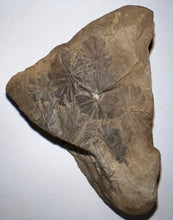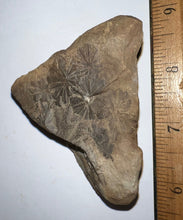This is a gorgeous authentic group of fossil Annularia leaves from the Pennsylvanian of the infamous Mazon Creek outcrop of Illinois! The leaves show great preservation on the concretion and zero repair or restoration! The leaves measure between .7 and .45 inches (1.79 to 1.14 cm)! A beautiful addition to any fossil collection!
Mazon Creek is a fossil site located in Illinois that dates to about 300 million years ago! It is world renowned for fossils of things that usually decompose quickly, like fern fronds, worms, jellyfish, and other soft tissue preserved in ironstone concretions in exquisite detail!
Horsetails are vascular plants that are closely related to ferns. They typically look like tall stalks with leaves that radiate outwards. The horsetails of the Pennsylvanian were gargantuan with some species growing up to 30 feet! Different parts of the horsetail are actually classified as different fossils. Stalks are referred to under the genus Calamites, Leaves as Annularia or Asterophyllites, and cones with six different genera each with several different species. Which of these "species" of cone leaf and stalk formed a single species of plant seems to still be a mystery.
All of my items come with a Certificate of Authenticity!
I do combined shipping on all items upon request!
Thank you for reading please contact me with any questions.
Have a wonderful day!
Species: Annularia
Size: The leaves measure between .7 and .45 inches (1.79 to 1.14 cm)
Found: Mazon Creek outcrop of Illinois
Age: 300 million years old
Repair: None




